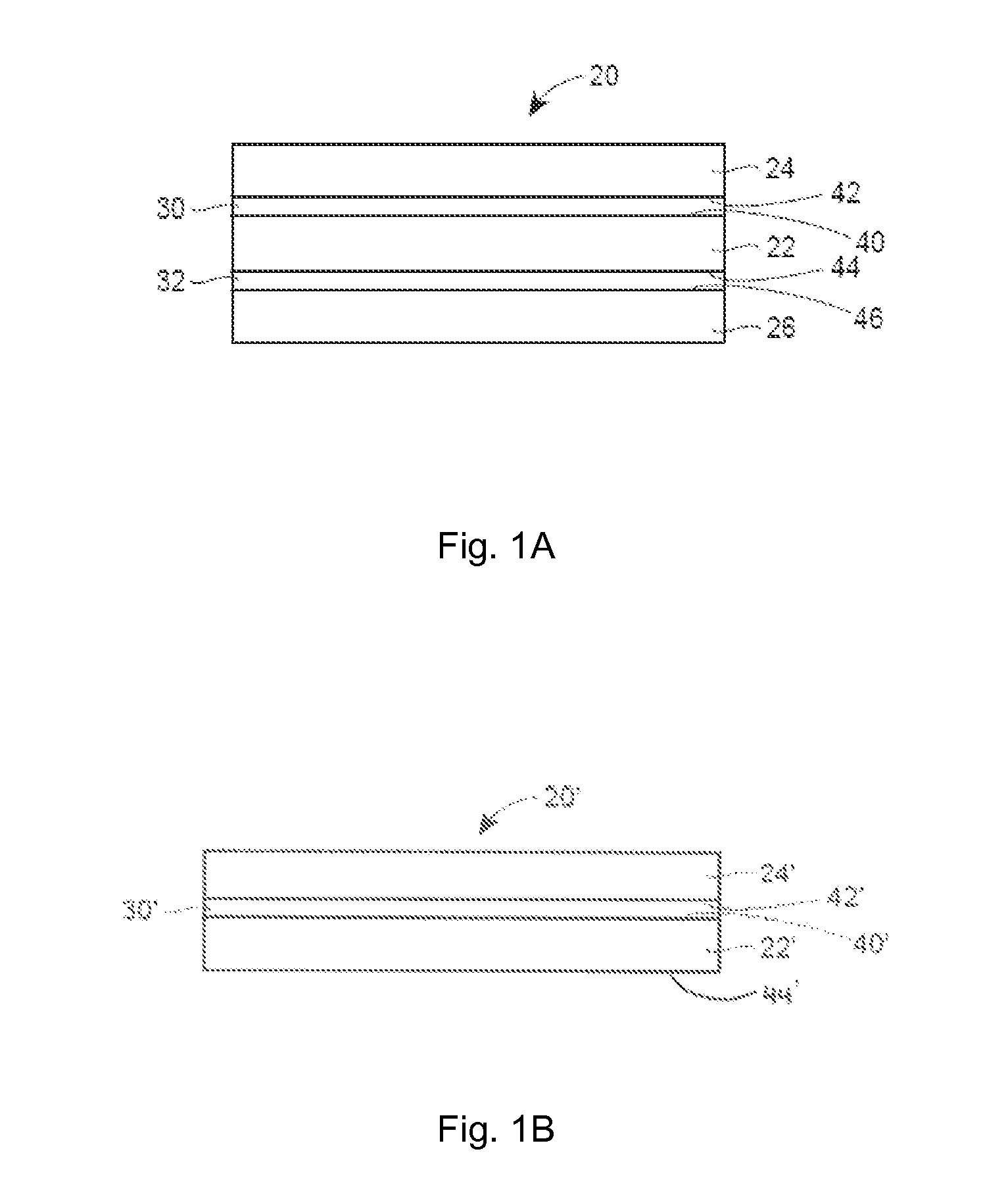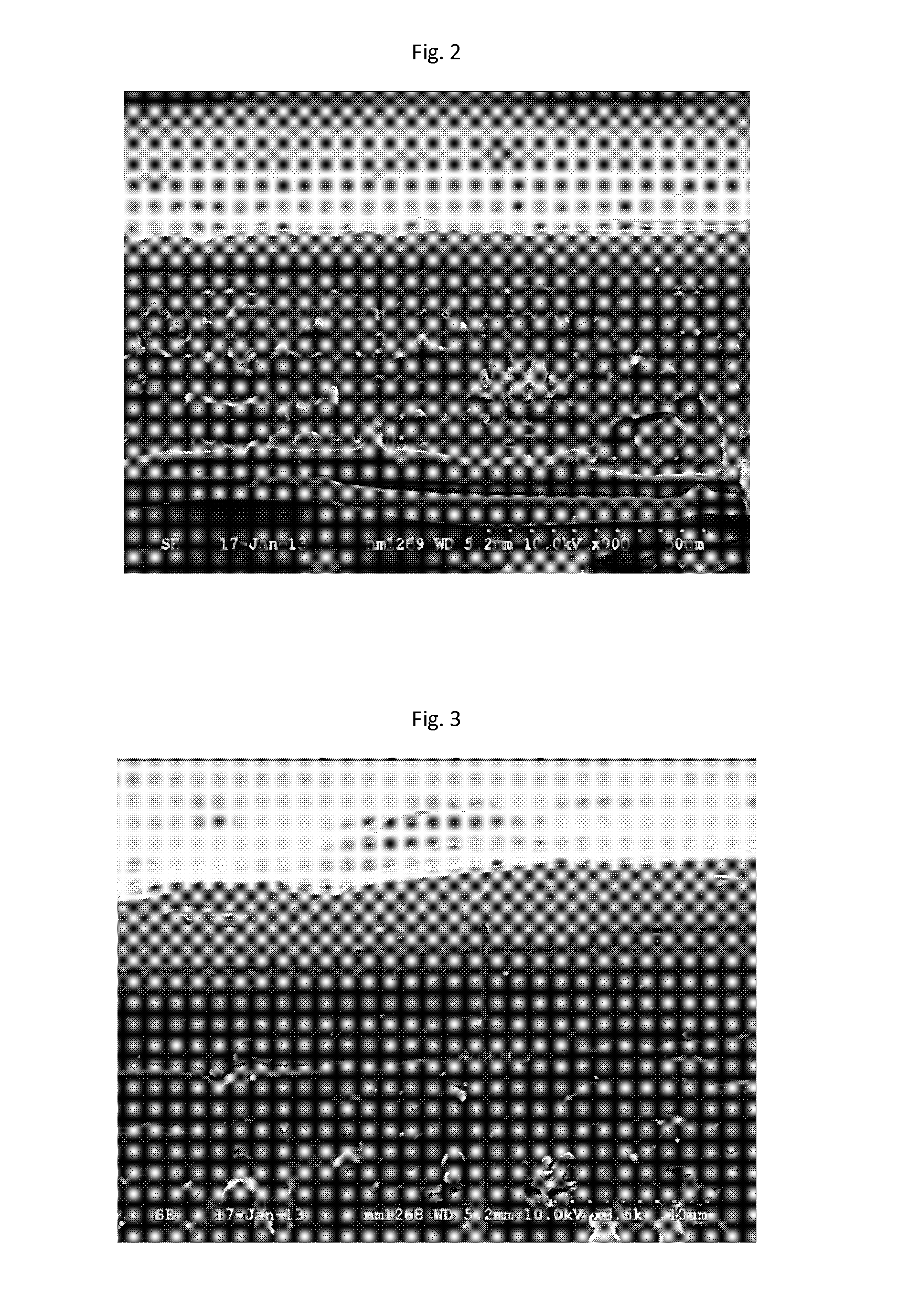Stretch laminate
a technology of stretch laminates and stretch, which is applied in the field of stretch laminates, can solve the problems of notoriously difficult and expensive manufacturing of stretch laminates
- Summary
- Abstract
- Description
- Claims
- Application Information
AI Technical Summary
Benefits of technology
Problems solved by technology
Method used
Image
Examples
first embodiment
[0088]the method of making a laminate according to the invention is explained below. FIG. 12 schematically shows the method of making an elastic laminate.
[0089]In the method shown in the figure, an elastic film 1 is stretched transverse to a web direction in a preactivation station, and after elastic relaxation is cut into strips 2. The strips 2 are guided over deflectors 3, and as parallel strips are laminated next to one another between two nonwoven material webs 4 and 5. The material webs 4 and 5 are guided above and beneath the strips 2 without prestretching, and are adhesively or thermally bonded to the strips 2. The view clearly shows that the elastic strips 2 are laminated at a spacing from one another between the cover webs, and that the nonwoven cover webs 4 and 5 are directly joined together in the gaps between the elastic strips 2. Elastic regions 6 and inelastic regions 7 are thus formed in the laminate 8. The laminate is supplied to an activation unit 9, in which the la...
second embodiment
[0093]the method will be illustrated in further detail with reference to a similar illustrated embodiment. FIG. 13 is a schematic representation of the second method of making a printed, elastic laminate.
[0094]With the method shown in the FIG. an elastic film 1 is cut into strips 2 that are guided across a deflector 3 and supplied to a laminator 4 as parallel strips. The strips 2 are laminated in the laminator 4 between textile cover webs 5 and 6 that are fed from above and below to the strips 2. The strips 2 and the textile cover webs 5 and 6 are glued together or connected to each other thermally. The view in the figure shows that the elastic strips 2 are laminated at a spacing from each other between the cover webs 5 and 6 and that the textile cover webs 5 and 6 are directly connected to each other in gaps between the elastic strips 2. This way, elastic regions 8 and 10 as well as inelastic regions 9 are created in the laminate 7. The laminate is then supplied to an activator 10 ...
PUM
| Property | Measurement | Unit |
|---|---|---|
| Thickness | aaaaa | aaaaa |
| Thickness | aaaaa | aaaaa |
| Thickness | aaaaa | aaaaa |
Abstract
Description
Claims
Application Information
 Login to View More
Login to View More - R&D
- Intellectual Property
- Life Sciences
- Materials
- Tech Scout
- Unparalleled Data Quality
- Higher Quality Content
- 60% Fewer Hallucinations
Browse by: Latest US Patents, China's latest patents, Technical Efficacy Thesaurus, Application Domain, Technology Topic, Popular Technical Reports.
© 2025 PatSnap. All rights reserved.Legal|Privacy policy|Modern Slavery Act Transparency Statement|Sitemap|About US| Contact US: help@patsnap.com



